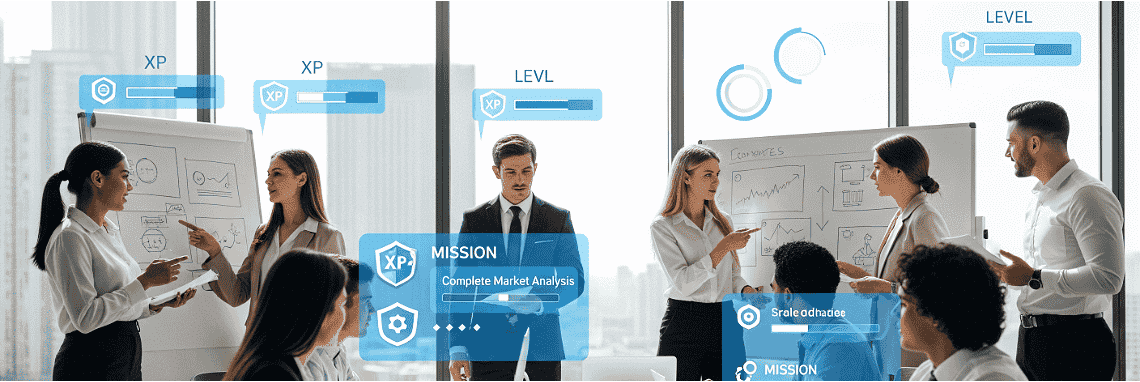In today’s dynamic work environment, training is no longer a one-and-done solution. While it plays a vital role in building foundational knowledge and skills, training alone doesn’t guarantee behaviour change or long-term performance improvement. In our experience at FocusU, the real magic often happens after the training session ends – in the reinforcement phase.
Why Workplace Training Is Important
Table of Contents
There’s no doubt that training matters. According to research, 40% of employees with poor training leave their jobs within a year. Another study shows that companies investing in employee training enjoy 24% higher profit margins compared to those that don’t.
Training builds competence, confidence, and alignment with organizational goals. It also strengthens engagement and reduces attrition.
But what does this look like in practice?
From instructor-led sessions and virtual modules to offsite experiential learning, the formats may vary – but the intent remains the same: to upskill employees and drive performance.
However, one-time learning events rarely lead to sustainable change. That’s why we believe it’s essential to view training as the starting point – not the finish line.
The Missing Piece: Reinforcement
In our experience, many L&D leaders express a similar frustration: “The training was great, but nothing seems to have changed back at work.”
This gap between learning and doing is exactly where reinforcement comes in.
Reinforcement is the process of supporting learners post-training to apply, reflect on, and internalize what they’ve learned. It’s where learning sticks.
Without reinforcement:
- New behaviours fade quickly
- Learners revert to old habits
- ROI on training drops drastically
With reinforcement:
- Concepts are embedded over time
- Confidence grows through practice
- Business impact becomes measurable
Related Reading: Why One-Day Training Doesn’t Work: The Case for Learning Journeys That Drive Real Change
Why Reinforcement Matters More Than Ever
In a world where skills can become obsolete in 2-3 years, the ability to retain and apply new learning is critical.
We’ve noticed that even the most engaging training sessions can lose impact if they aren’t followed up with:
- On-the-job application prompts
- Regular manager check-ins
- Peer reflections
- Microlearning refreshers
- Nudges and reminders
Organizations that embed learning into the flow of work see better results.
Real-World Examples from Our Work
In one of our leadership programs for a technology major, participants went through a 2-day workshop on giving feedback. But it was only when we added post-workshop nudges, reflection prompts, and peer coaching groups that we saw measurable improvement in how feedback was being delivered and received.
In another case, we designed a learning journey for first-time managers that stretched across three months. Each module built on the last, with assignments, journaling, and manager alignment. The result? Participants not only retained what they learned, they started showing up differently at work.
Related Reading: How to Ensure Learning Sticks: A Blended Approach for New Manager Development
The Science Behind Reinforcement
According to the Ebbinghaus Forgetting Curve, people forget up to 70% of new information within 24 hours if there is no attempt to reinforce it.
What helps counteract this?
- Spaced repetition
- Real-world application
- Feedback loops
- Active recall exercises
In our learning journeys, we integrate all of these to ensure training isn’t just a feel-good moment but a sustained behaviour change engine.
Related Reading: Why Positive Reinforcement Works In Improving Performance?
Building a Culture of Continuous Learning
Reinforcement isn’t just about follow-up emails. It’s about creating an ecosystem where learning is ongoing.
In our work with clients, we’ve seen powerful outcomes when reinforcement is built into:
- Manager 1:1s and team meetings
- Internal communication channels
- Peer learning circles
- Performance conversations
Reinforcement becomes most effective when it’s owned by the system, not just the L&D team.
Related Reading: The Learning Paradox: Why Traditional Training Isn’t Working
Key Takeaways for L&D and HR Professionals
- Think beyond the event: Design learning journeys, not just workshops.
- Involve managers: Their role is critical in reinforcing learning.
- Make learning visible: Encourage peer sharing and recognition.
- Use multiple modalities: Combine tech, touch, and time for better retention.
- Measure what matters: Track behavioural shifts and business impact, not just attendance.
In Conclusion
Training is essential. But on its own, it’s not enough.
In our experience, the organizations that see true transformation are the ones that understand this simple truth: Learning must be reinforced to be retained.
When you design for reinforcement, learning becomes more than a moment – it becomes a movement.
And that’s when your people don’t just learn. They grow. They lead. They #BeMore.









